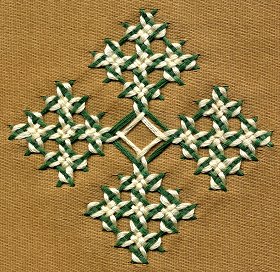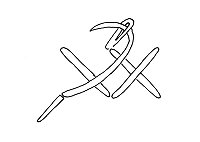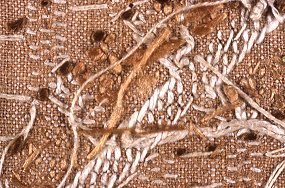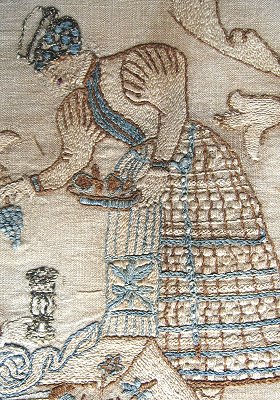
| ANNE WANNER'S Textiles in History / Vocabulary Project |
| The first booklet of
the Vocabulary Project is out
of print: |
information at wanner@datacomm.ch |
K
R E U Z S T I C H |
P O I N T D E C
R O I X et points croisés ________________________ P U N T O C R O C E e punti incrociati |
 |
The
project of a glossary of embroidery stitches arose
among the members of the „Embroidery Group“,
one of the specialized groups under the banner of the
CIETA (Centre International d’Etude des Textiles
Anciens, based in Lyon). |
Booklet of 18 pages,
in 4 languages (German, English, French and
Italian) Many samplers and diagrams of embroidery stitches in colour. Detail photos of historic embroideries of the Iklé collection, St.Gallen. Author: Anne Wanner-JeanRichard, Rheinfelden. Diagrams: Margarete Müller-Schulten. Layout, photos, scans, embroidered stitches: Anne Wanner-JeanRichard. Translation: Elizabeth Fischer (English and French), Thessy Schoenholzer (Italian). Consulting: Ute Bargmann (Conway, MA, USA), Mary Schoefer (Lyon, F), Uta-Christiane Bergemann (Bochum, D), Marianne Flügel (Köln, D). Editor: Textilmuseum St.Gallen, Schweiz. © Textilmuseum St.Gallen, Anne Wanner-JeanRichard. ISBN 978-3-033-02103-7 Photonachweis Textilmuseum St.Gallen Niedermann Druck AG, St.Gallen, 2009 |
Acknowledgements My gratitude goes to the Iklé-Frischknecht Foundation for its financial support of the project. The textile examples from the Iklé-Jacoby collection were made available thanks to Hanspeter Schmid, director of the St. Gallen Textile Museum, Ursula Karbacher, curator and Janina Hauser, textile conservator. I am indebted to my husband Rene Wanner for expert advice and technical assistance on digital presentation. Thanks are also due to all CIETA colleagues who encouraged this endeavour through our many discussions during conferences and meetings. |
|
 |
front |
reverse |
|
 |
|
 Swiss linen embroidery, 16th c., reverse |
|
 - Detail of David and Bathseba, 16th c. St. Gallen Textilmuseum Inv. 47673 In the booklet there are some examples of Swiss Linen embroidery and therefore a short description of this kind of Swiss regional embroidery is added. The text is the following: |
| Some 400 pieces of
embroidery made in this technique are preserved in Swiss
and foreign collections. It flourished mainly at the end
of the 16th and beginning of the 17th century. Thanks to
the coats of arms embroidered on them, they can be
attributed to the German parts of Switzerland. No French
or Italian emblem or inscription is to be found among
them. Most probably, but this remains to be proven, the
main linen production centres also became the main
centres of this handicraft. Such was the case of Sankt
Gallen and the region of Lake Konstanz. The regions
bordering Northern Switzerland – Alsace, the Black
Forest and Southern Germany – are to be included in
this area of distribution. One of the finest particularities of these embroideries produced between the 15th and the 17th century lies in the vitality and freshness of their narrative evocations, be it on the tablecloths and seat covers for domestic daily |
use or on the altar cloth
linens. Christian themes dominate, both in biblical scenes or symbolic representations. The materials used and the embroidery techniques are consistant in the group: the ground fabric is linen, in some cases a linen warp with cotton weft. The fabric doesn’t merely serve as the ground, but always remains visible, without challenging the dominating white embroidery thread. Sometimes brown and blue embroidery threads would also be used, and in certain cases coloured silk threads, as well as metallic or wool threads. The reasons for the decline of whitework embroidery during the 17th and 18th century are not known: was it due to the Thirty Years’ War, which brought devastation mostly to Germany? Or must it be attributed to changes in the arrangement of domestic interiors and the evolution of costume? At any rate, lace-work henceforward captured popular favour. |
| home | Last revised October, 2011 |